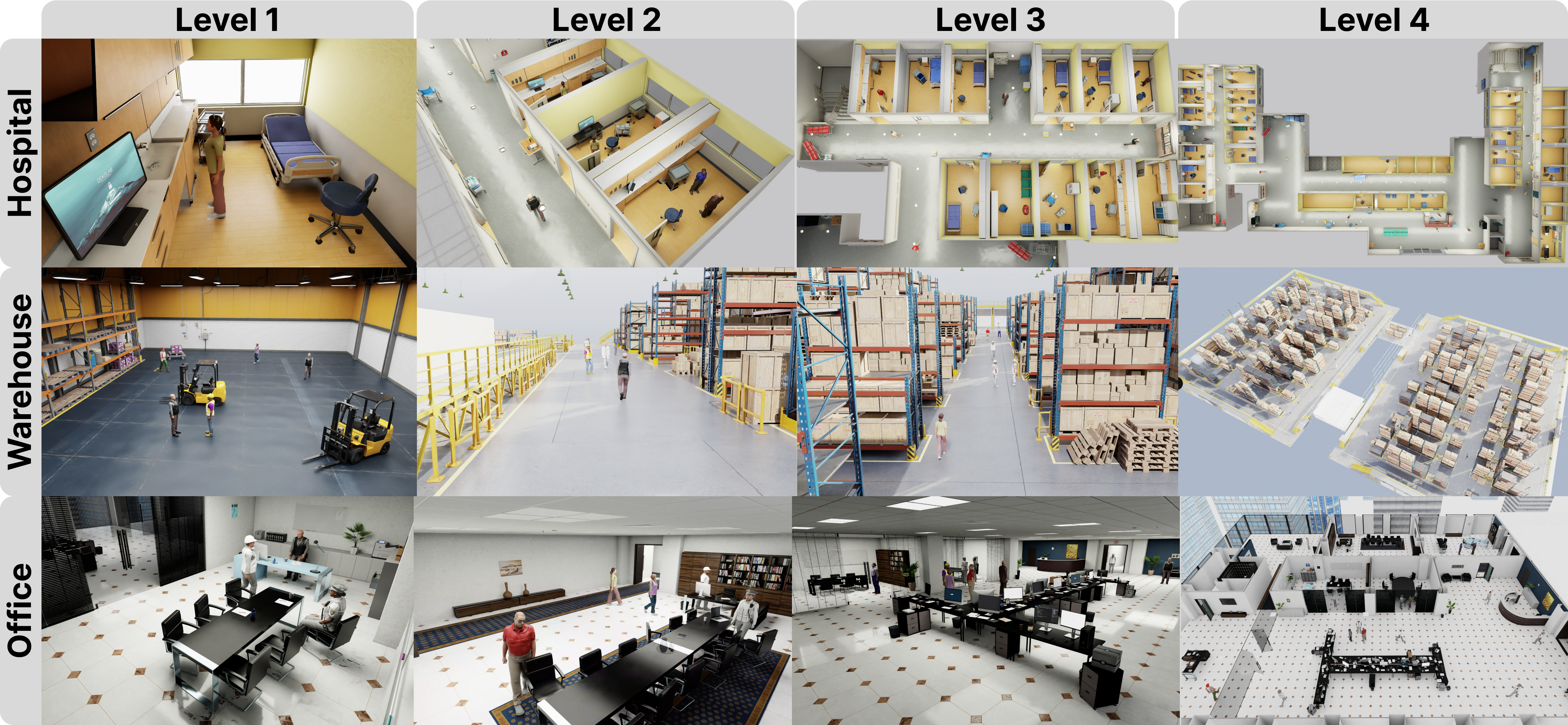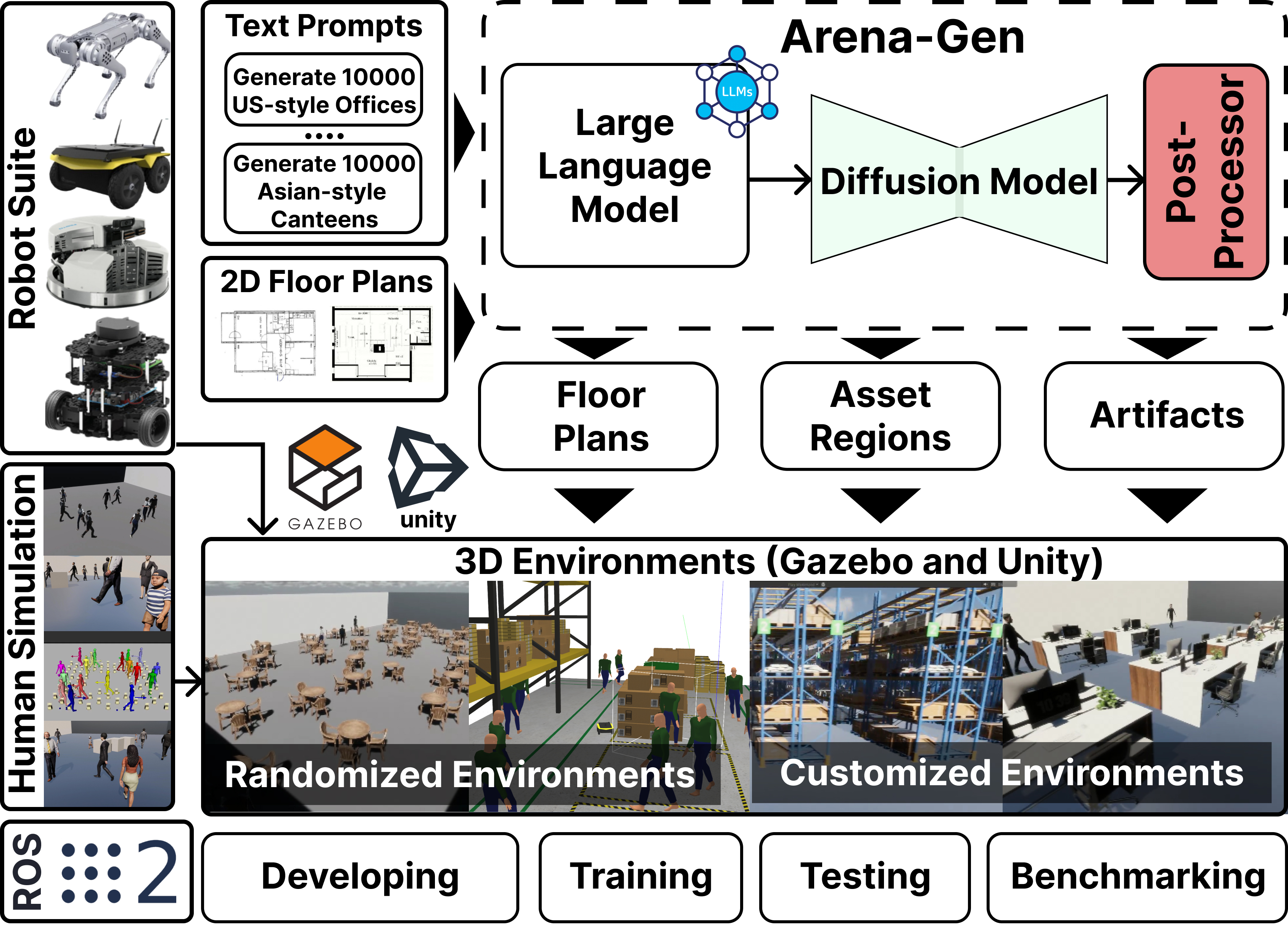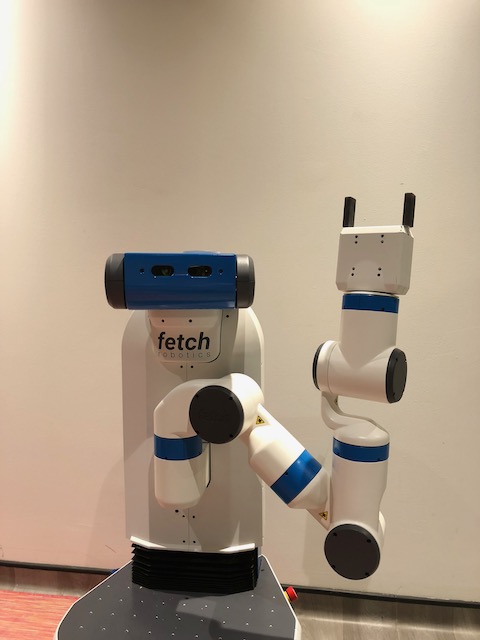Arena 5.0: A Photorealistic ROS2 Simulation Framework for Developing and Benchmarking Social Navigation, Linh Kästner★, Volodymyr Shcherbyna, Harold Soh★, Giang Nguyen Huu Truong, Do Duc Anh, Ton Manh Kien, Tim Seeger, Ahmed Martban, Vu Thanh Lam, Nguyen Quoc Hung, Pham Thai Hoang Tung, Tran Dang An, Eva Wiese, Maximilian Ho-Kyoung Schreff, Robotics: Science and Systems (RSS)
Links:
Advancing the Arena platform further, Arena 5.0 delivers a next-generation simulation and benchmarking infrastructure for social navigation—combining photorealism, complete ISAC SIM Integration, ROS 2 support, and flexible scenario creation.

Core Contributions of Arena 5.0:
- Full integration of NVIDIA Isaac Gym, enabling photorealistic environments and efficient training pipelines within the Arena ecosystem :contentReference[oaicite:1]{index=1}.
- Comprehensive benchmarking suite of modern social navigation strategies, assessed across diverse, generated and customized environments using a wide range of social navigation metrics :contentReference[oaicite:2]{index=2}.
- Extensive, customizable scenario generation and task-planning modules, including specialized setups like emergency and rescue scenarios, enhancing flexibility and application realism :contentReference[oaicite:3]{index=3}.
Arena 5.0 builds upon Arena’s prior strengths—retaining support for ROS 2, existing modules such as world generation and evaluation pipelines, planners, robot models, and APIs—all now seamlessly integrated within Isaac Gym :contentReference[oaicite:4]{index=4}. The platform also includes a user study showing significant usability and efficiency improvements over previous versions :contentReference[oaicite:5]{index=5}.

With Arena 5.0, the platform sets a new standard for realistic, robust, and customizable social navigation development pipelines—bridging the gap between simulation fidelity and real-world applicability.
Resources
You can find the paper here.
Check out our repository on GitHub.
Citation
Please consider citing our paper if you build upon our development and results.
Contact
Current collaborations span various research and industrial institutions. If you’re interested in contributing—whether it’s through undergraduate or graduate theses, or research modules like social navigation learning, photorealistic simulation pipelines, or adaptive scenario generation—please reach out. Basic knowledge in ROS 2, Python and/or C++, and interest in robotics are required. For inquiries, contact Author.





